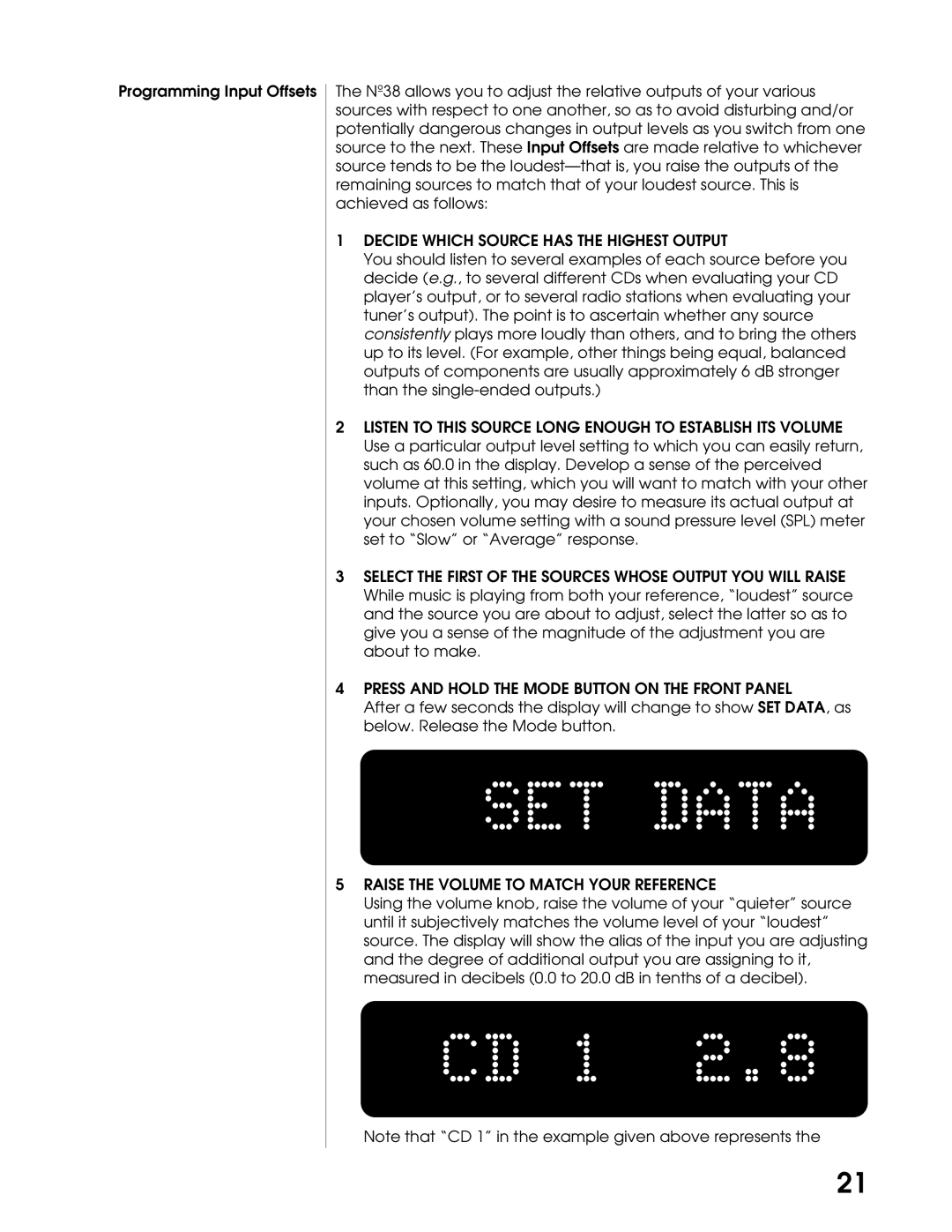
Programming Input Offsets
The Nº38 allows you to adjust the relative outputs of your various sources with respect to one another, so as to avoid disturbing and/or potentially dangerous changes in output levels as you switch from one source to the next. These Input Offsets are made relative to whichever source tends to be the
1DECIDE WHICH SOURCE HAS THE HIGHEST OUTPUT
You should listen to several examples of each source before you decide (e.g., to several different CDs when evaluating your CD player’s output, or to several radio stations when evaluating your tuner’s output). The point is to ascertain whether any source consistently plays more loudly than others, and to bring the others up to its level. (For example, other things being equal, balanced outputs of components are usually approximately 6 dB stronger than the
2LISTEN TO THIS SOURCE LONG ENOUGH TO ESTABLISH ITS VOLUME Use a particular output level setting to which you can easily return, such as 60.0 in the display. Develop a sense of the perceived volume at this setting, which you will want to match with your other inputs. Optionally, you may desire to measure its actual output at your chosen volume setting with a sound pressure level (SPL) meter set to “Slow” or “Average” response.
3SELECT THE FIRST OF THE SOURCES WHOSE OUTPUT YOU WILL RAISE While music is playing from both your reference, “loudest” source and the source you are about to adjust, select the latter so as to give you a sense of the magnitude of the adjustment you are about to make.
4PRESS AND HOLD THE MODE BUTTON ON THE FRONT PANEL
After a few seconds the display will change to show SET DATA, as below. Release the Mode button.
5RAISE THE VOLUME TO MATCH YOUR REFERENCE
Using the volume knob, raise the volume of your “quieter” source until it subjectively matches the volume level of your “loudest” source. The display will show the alias of the input you are adjusting and the degree of additional output you are assigning to it, measured in decibels (0.0 to 20.0 dB in tenths of a decibel).
Note that “CD 1” in the example given above represents the
21
